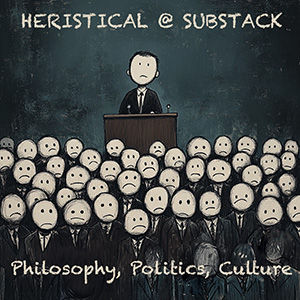
When the first issue of The Philosophers’ Magazine finally appeared at the end of 1997, the congratulations from my then partner’s father were somewhat deflated by his immediate follow-up question: will there be a second? Neither of us knew that the magazine would last much longer than my relationship with his daughter.
His scepticism was perhaps a little insensitive and untimely but it was not entirely unjustified. There was hardly an obvious, large enough market for the magazine and neither myself nor co-founder Jeremy Stangroom were exactly business-savvy, as the history of the magazine would go on to repeatedly reveal.
The idea for the magazine came to me while I was working on my philosophy PhD at University College London. I had always been interested in writing and journalism and had worked on the student newspaper Spark at Reading University as an undergraduate. So when I went to UCL I quickly got involved with their magazine Pi, eventually becoming arts editor.
In the two years between my degrees, however, the production process had been completely transformed by new-fangled “desktop publishing”. At Reading, we would-be hacks would hand our articles to the student union secretary who would then type them up. We then literally cut and paste these onto sheets, leaving spaces for photographs, and sent them to the printers.
At UCL, every page was laid out on a computer screen. (We still had to leave spaces for the printer to insert images as neither office-grade scanners nor the working memory of the Apple LC 475 computers we used were yet powerful enough to deal with them.) This technology empowered determined amateurs to produce pretty professional looking pages.
Realising that anyone with a computer and enough money to pay for a print run could produce a periodical, I soon starting entertaining the idea of a magazine of philosophy. Both of those nouns were important to the concept. I wanted it to be a proper magazine, not a popular journal. That meant news, features, interviews, reviews, columns, generous use of images, a smart layout, even a crossword. It meant planning coherent issues, not relying on what potential contributors happened to send in. It also meant being prepared to edit: turning verbose, over-length essays in to leaner, clearer reads. Clarity was essential: contributors were told to use no unexplained jargon and to assume readers knew nothing but were at least as intelligent as they were. This still seems to me like a good principle for writing about difficult topics for the general reader.
I also wanted it to contain “real philosophy” as we sometimes said in early promotional material. It’s hard to pin down what this means but it is something like philosophy which is robust, well-argued and based on sound scholarship. But since we were not peer reviewed, how could we judge what qualified or not? I had to use my own judgment, of course, but not being an expert on everything, I felt I had to rely on proxies for quality, such as academic credentials. Since most articles were invited rather than blind submissions, this policy made it very difficult for enthusiasts and dilettantes to get published in the magazine, to their understandable frustration. This was a limitation but, I felt, an inevitable one to keep the quality high. (I should add that I did not allow myself space to articulate substantive philosophical arguments either, restricting my contributions to interviews, features and reviews.)
Such a real magazine of real philosophy could provide a breadth and variety of content not found in journals for those already steeped in philosophy, while also offering accessible, engaging ways in to the subject for those who weren’t. As far as I was aware, no such thing existed. As we prepared to launch, it turned out that some others did not agree. We were disappointed to receive some uncomradely letters from editors of public-facing philosophy publications who thought we were treading on their toes. I did not think any of these, however, were doing what we planned to do. Even if they were, the market was hardly overcrowded.
The magazine remained just an idea for some time. It seemed a big commitment for someone with no resources. With some encouragement, I took the modest first step of producing a four-page “blad”: a kind of sample issue. It had a cover, a short feature on teaching philosophy to children, a profile of Kierkegaard and a fantasy table of contents that had a structure that was pretty close to that of the eventual magazine.
I decided to use the printer of Pi and headed down to his premises in west London with my floppy disc, photos and illustrations. Examining them, he dropped the bombshell that it would cost nearly double the figure of around £100 he had quoted me over the phone, as it was a more complex job than he thought. I agreed and clearly remember feeling physically shocked at what I had just done. It seemed such a lot of money for a project that still felt hypothetical. Although I was clearly entrepreneurial in some ways, taking risks with money was not in my nature.
That might have been the end of it, were it not for Jeremy Stangroom. We had both recently completed PhDs and were scraping our livings doing tutorial work, including in one small establishment that seemed to specialise in catering for spoiled but troubled rich kids. Jeremy was spending a lot of his time building websites and offered to create one for the magazine.
That first site was as astonishing then as it would seem primitive now. The entry page was Raphael’s “School of Athens”, which loaded line by painstaking line via the dial-up modem. At the time, however, the site was state of the art: many much bigger magazines didn’t have websites at all.
Encouraged by our collaboration, Jeremy came in as a full-blown partner. As well as doing the website, he created our cover illustrations, provided a lot of the photographs and contributed articles. Crucially, a couple of his friends and family loaned us the money for our first print run. We realised very early on that neither of us could have done the magazine without the other. Because I was the face of the project, this has not always been appreciated.
Issue one was a little late, not least because I had wildly underestimated how much time it would take to layout and proofread the magazine. We and our partners convened in my bedsit room intending to do it in a day, which would have been impossible even without the inevitable temptation to start chatting.
That first issue showed our inexperience in many ways. The font was too small, the pages too dense, the images too dark. But looking at it now, it clearly provided the template for what was to follow. We had an interview with a top-rate philosopher, G.A. Cohen; a feature on using games to teach philosophy; a topical essay on cloning; a debate on sexism; a themed forum on Marx; Wendy Grossman’s Skeptic column (still going strong); and reviews of new books, not ones that were years old. We didn’t burst on the scene fully formed, but our shape was pretty clear.
At the time the 1,000 copies arrived at my front door, we had only a handful of subscribers and no retail stockists. Nor did that first issue contain any advertisements, which are vital to the success of any consumer magazine. (Apart, that is, from a free one we gave to The Big Issue to fill the inside front cover) Luckily, we were able to improve our situation quickly. By issue three, Central Books had agreed to distribute the magazine to book stores around the country and a few in the commonwealth. At that time, there were many such outlets and at our peak I think nearly 900 copies went out this way, although many came back as returns.
Routledge also started advertising regularly on our back page from issue five, and have continued to support the magazine with full-page ads ever since. Blackwell and Continuum joined them on the inside covers. I am sure these were not purely commercial decisions and we always appreciated the support we got from the big philosophy publishers, in particular from editors Tony Bruce and Jeff Dean in our early days.
We exhibited at major philosophy conferences, in part to sell the magazine but also to develop links with academics and publishers. Our first trip across the Atlantic was the World Congress of Philosophy in Boston in 1998, an event remembered by many for the last joint appearance by W.V.O. Quine and Donald Davidson. The trip exposed a huge culture gap that suggested we were based in the wrong country. American academics would come to our stall and ask “what’s this?” followed up by “great!” and “good luck!” In contrast, a lot of British academics were suspicious at best, sniffy at most. I have a flashbulb memory of one who, passing our stall at a safe distance of a couple of metres, slowed down to look over his nose at us, barely turning his head. As soon as he made eye contact he just smiled awkwardly and scurried off. He represented a significant minority of British academics. Fortunately, we received more than enough support from the academic community on both sides of the Atlantic to counter this snobbery.
It didn’t take too long for the magazine to find its feet and build a core readership, which we guesstimated comprised roughly one-third people involved in the teaching of philosophy, one-third students and one-third general readers. We organised a number of successful bookshop talks and debates and published a book anthologising lighter articles, The Philosopher’s Snack Pack, with my somewhat garishly designed yellow and blue banana motif cover. It is something of a collector’s item, if only in the sense that not many were sold.
Despite our modest success, the fact remained that TPM, as it increasingly came to be known, was not a viable commercial proposition. It washed its own face financially, but was effectively being subsidised by our time — loads of it. There was a period where it seemed we were able to pay both of us something but it later became apparent that was mainly because our accounting was so poor we mistook cash flow for cash profit.
I never wanted the magazine to continue on that basis indefinitely. Nor did I want my identity to become so bound up in it that I would end up editing it forever, unwilling to give up my baby. But finding a way forward was difficult. We tried diversifying by publishing books, but lacking distribution it was too difficult to sell them in the required quantities. We started developing an interactive CD-Rom when such things were temporarily en vogue. Although we got as far as a prototype, there just wasn’t enough time to finish it, which was probably a good thing considering how few such products actually turned a profit before finally vanishing altogether.
I would often put out feelers to potential collaborators and eventually we teamed up with a third partner who provided publishing expertise, office space and an injection of cash that resulted in TPM’s first and last employee. His plan was to build the business, including a book publishing wing, and then sell it on. This seemed to be a standard model in publishing where businesses are valued according to a multiple of their turnover, not profit, which always seemed crazy to me. Our timing, however was dreadful. The financial crash of 2007 came almost as soon as we got going.
Whatever the future of the magazine, I wanted my own exit strategy. I had been editing it for over ten years and it had taken up too much of my life. I can honestly say that when I scratched my head and thought about who might be up to the job of replacing me, the only clear candidate was James Garvey. He has subsequently proven embarrassingly clearly that I was far from irreplaceable. He and Jeremy have managed not only to keep the magazine going but to keep it moving forward, helped by a number of people whose belief in the value of the project exceeds their desire to be paid. They have seen it through some tumultuous ownership changes back to full independence.
One of the greatest privileges of my 13 years at the helm was the opportunity to meet and talk with many academics. I discovered that most people in the philosophy world are friendly and generous with their time, if not good with it. Whatever their metaphysical views are, they tend to act as though time were an illusion, deadlines especially so. Almost every top academic we approached with an interview request agreed, the only refuseniks being those who said no to virtually everyone.
That is not to say philosophers are without ego and vanity. In an early interview with Martha Nussbaum, I naively asked her whether her suggestion that a compulsory two-semester course in philosophy would help people become fully human, informed citizens was a little tongue in cheek. She let it be known it certainly was not. But in my experience philosophers are on the whole subject to the same failings and weaknesses as anyone else. I’ve had one threaten lawyers for technical inaccuracies in a review that led readers to believe that the woman he had admitted hitting was his wife when they weren’t in fact married. Another, who made the fatal mistake of trying to win an argument with Jeremy, tried to kill the debate by pointing out he was older and more experienced. One rewrote an interview transcript to insert an invitation to him I had not made to tell us about his next book, which he then gladly did.
It’s worth repeating these stories because I think the greatest danger of philosophy is that it can generate an over-confidence in your own rationality and ethical sophistication. To avoid hubris it’s important to remember that philosophers are not always better thinkers than others and that their ability to construct rigorous philosophical arguments does not automatically translate into better overall critical thinking skills, let alone superior moral virtue.
I’ve also discovered that there are a lot of philosophers outside of academe frustrated that they can’t get their ideas heard. It’s easy to dismiss most of them as nutters, especially since most don’t have modest contributions but grand theories of pretty much everything. However, they are mostly very bright indeed. Their tendency to run away with their ideas and build overly grand systems is, I think, largely due to the absence of smart peers to rein them back in. Philosophy is often thought of as a solitary pursuit, with most major works carrying the name of a single author. But each of these contributions depends on a community of thinkers challenging each other and suggesting alternative paths. One of TPM’s functions is to extend this community.
There does seem to be greater public interest in philosophy now than when we started 20 years ago, something I don’t think we can take credit for. It remains, however, too marginal in our culture. Philosophers have got better at speaking to a wider audience but not with it. The challenge for the next two decades is to become a greater part of society’s big conversations.
Julian Baggini is founding editor of The Philosopher’s Magazine. His most recent book is A Short History of Truth: Consolations for a Post-Truth World

